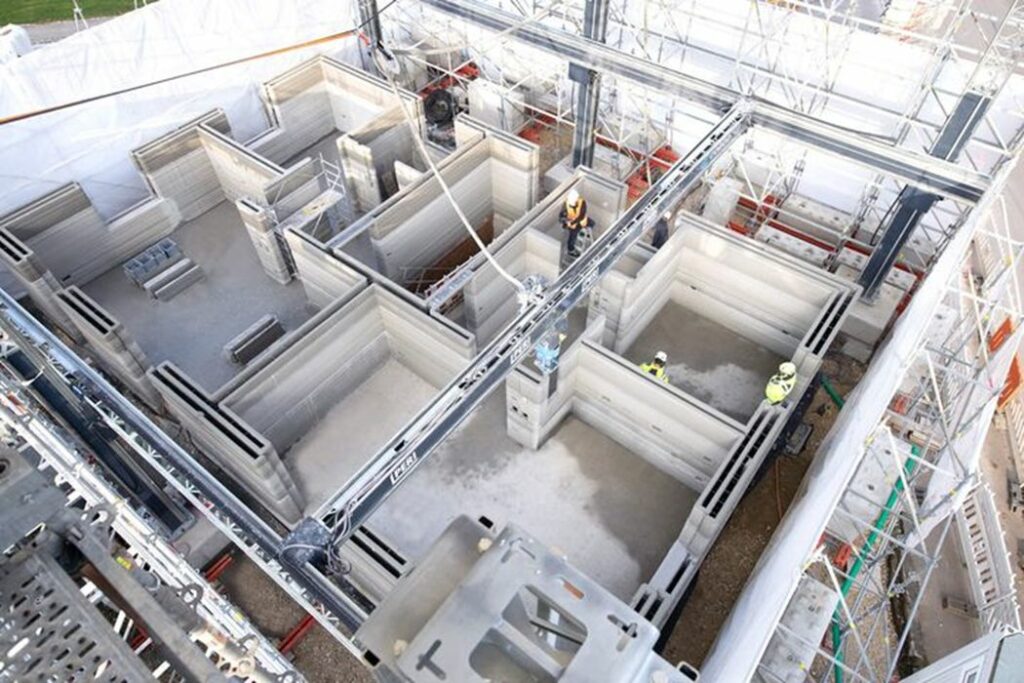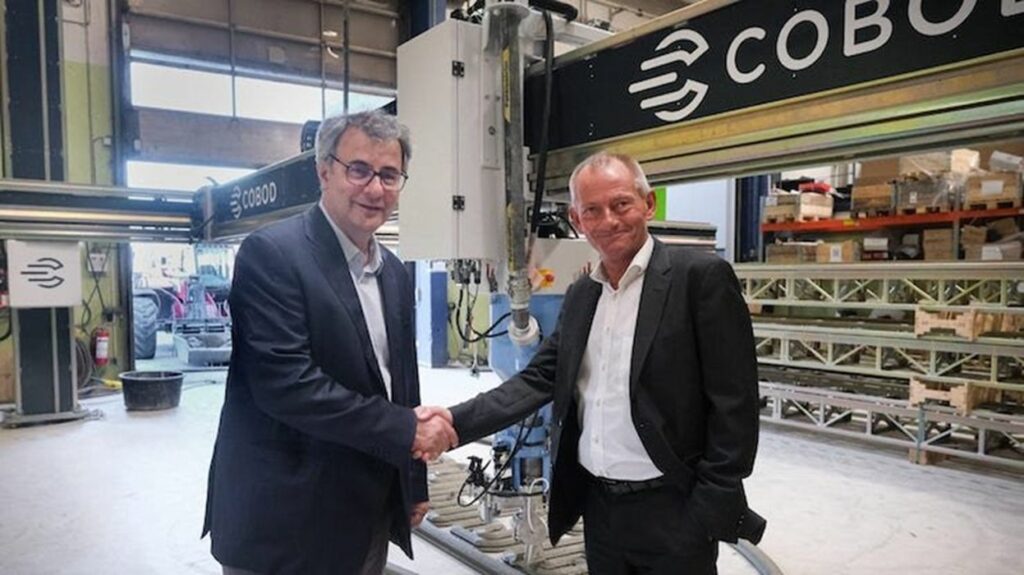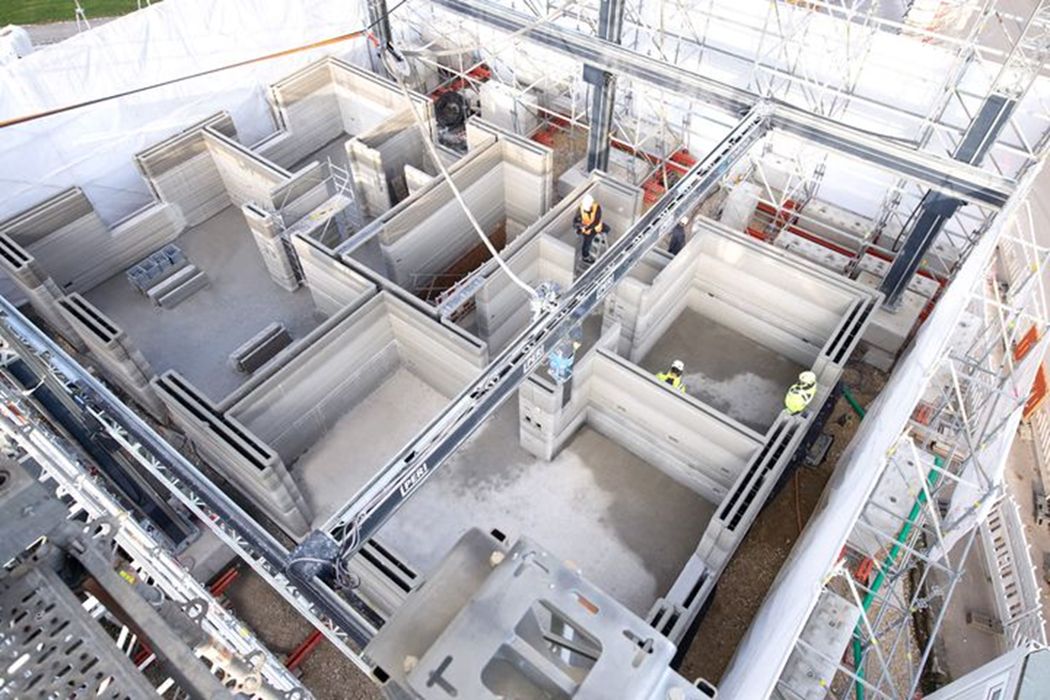
Charles R. Goulding and Julia Wallace review some of the latest developments in construction 3D printing with CEMEX and COBOD.
On May 25th the Additive Manufacturing Coalition hosted a webinar entitled “The Use of AM in Construction,” with four speakers: Peter Cooperman, marketing and strategy at Black Buffalo; Philip Lund-Nielsen, co-founder of COBOD; Tom Woodman, founder of Citizen Robotics; and Dan Hardcastle, special assistant in the Office of the Secretary of HUD. The importance of using 3D construction printing (3DCP) was discussed, with a focus on the accessibility of this technology.
Why We Need 3D Construction Printing
Peter Cooperman went over the urgent need for a new solution to housing construction. The price of buying a home has risen by 55% in the past year, a result of higher mortgage rates and the mass exodus from cities, among other factors. The construction industry is massive, but its workforce is dwindling as employees age out of the business, and younger people lose interest and seek other careers. Billions of tons of waste are produced from construction, and techniques have not changed in over 20 years. 3D printing could be part of the solution.
Tom Woodman’s non-profit organization, Citizen Robotics, sees additive manufacturing of homes as a way to attract and train young people in construction. This process also lowers the costs of construction, maintenance, and temperature control of a house, and produces nearly no waste. He compares the transition from traditional timber-framed homes to 3D printing to Henry Ford’s automation and use of the assembly line in constructing cars; it makes production less expensive and more accessible. As Tom Woodward and Philip Lund-Nielsen pointed out, the use of 3DCP also makes it easier for additional services, such as the installation of electrical and plumbing components, much easier since cavities in the wall can be designed into the CAD plans for the home, streamlining the entire process of building.
Overcoming Barriers
One of the biggest issues faced by this industry, according to Tom Woodman, is conservatism in the architectural engineering and construction industry. Many people are hesitant to accept this more efficient way of construction, whether it be private building companies or the local officials that need to approve building and zoning. This issue can be overcome by continuing to build successful projects using 3DCP, which will demonstrate the benefits in a way that is both tangible and understandable.
Philip Lund-Nielsen pointed out that attracting lots of publicity for these projects would amplify the effects of this. Most projects thus far have been one-offs, and very few large-scale projects have been completed. Black Buffalo has submitted its process to the International Code Council Evaluation Service and is awaiting results, which could set a precedent for making 3DCP more accessible across about 50 countries. Peter Cooperman and Philip Lund-Nielsen agreed that standardizing building practices and training would also be a tremendous help to this effort. Tom Woodman added that transparency from companies is an important contribution, as well.
CEMEX Invests in COBOD

Two months after the webinar, on July 26th, CEMEX, a global leader in the building materials industry, announced that its corporate venture capital and open innovation unit, CEMEX Ventures, is investing in COBOD. Through an existing partnership, they have already introduced and implemented a unique 3D printing solution that utilizes conventional ready-mix concrete, which can bring significant savings as current 3DCP relies on highly specialized and expensive mortars.
Together, CEMEX and COBOD will continue to evolve 3D printing construction with innovative material solutions and building performance enhancements for 3D printing applications. By doing so, they will be able to significantly reduce the costs and time associated with 3DCP and ultimately provide an alternative approach to address housing needs.
The Research & Development Tax Credit
The now permanent Research and Development (R&D) Tax Credit is available for companies developing new or improved products, processes and/or software.
3D printing can help boost a company’s R&D Tax Credits. Wages for technical employees creating, testing and revising 3D printed prototypes can be included as a percentage of eligible time spent for the R&D Tax Credit. Similarly, when used as a method of improving a process, time spent integrating 3D printing hardware and software counts as an eligible activity. Lastly, when used for modeling and preproduction, the costs of filaments consumed during the development process may also be recovered.
Whether it is used for creating and testing prototypes or for final production, 3D printing is a great indicator that R&D Credit eligible activities are taking place. Companies implementing this technology at any point should consider taking advantage of R&D Tax Credits.
Conclusion
Dan Hardcastle spoke on the federal government’s interest in using 3DCP to help solve the housing crisis. The Biden administration has recently joined in the launch of Additive Manufacturing Forward, a compact that will increase the use of 3DCP among small/medium-sized suppliers in America. This, along with the Innovative Housing Showcase that took place in Washington D.C. this past June, shows incredible promise for the rise of additive manufacturing in the American construction industry. Black Buffalo is among the list of exhibitors and will be demonstrating the use of its NEXCON 3D printer.

